Board Layout
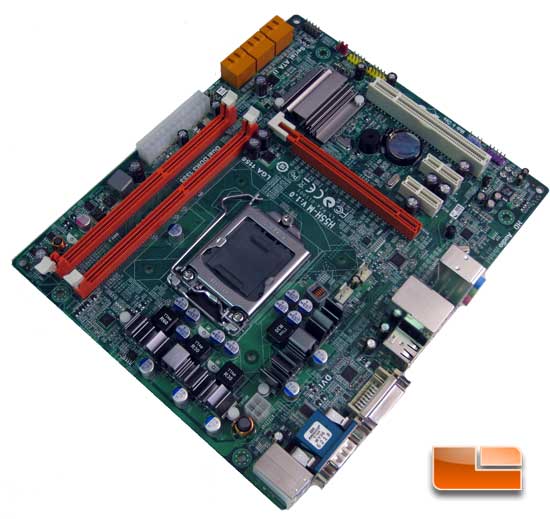
As you look at the board, you almost get a flashback to the early days of building your first system because of the green PCB. It is a small board, and very easy to handle. You certainly will not have any issues installing this into most any case. Just like the specs told us on page one, this is a Micro-ATX size board that measures in at a wee 244mm*200mm.
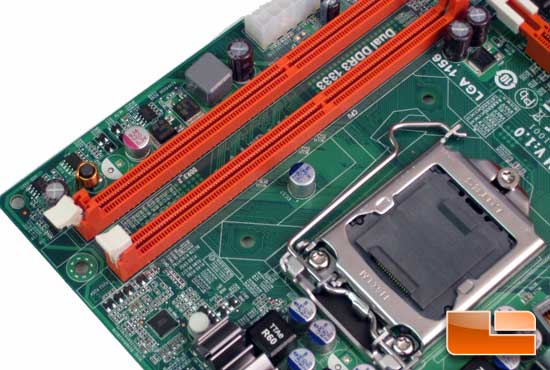
The top left of the board is where we find the dimm slots. The ECS H55H-M has only two dimm slots, and supports up to 8GB of DDR3 memory in dual-channel configuration. We also have the 24-pin power connector here, which is conveniently located at the edge of the board.
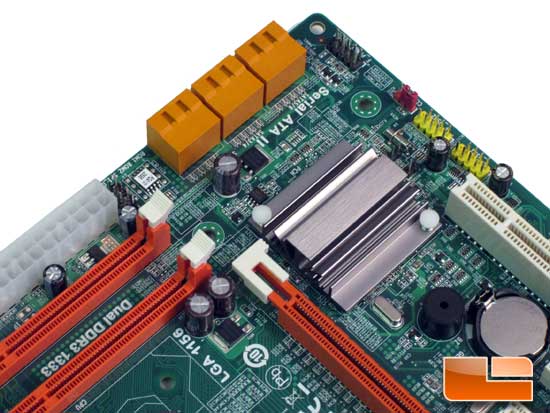
The bottom right of the board is where we find our chipset, as well as the front panel pins for powering on your machine, among other things. Intel describes their new H55 (and 57) chipsets as follows:
“The Intel H57 and H55 Express Chipsets deliver new technologies and innovative ca- pabilities for digital home and small office/ home office consumers. The technologies featured in these chipsets include inte- grated Intel HD Graphics, Intel Remote PC Assist Technology, and the new Intel Rapid Storage Technology (Intel RST).
The Intel H57 and H55 Express Chipsets are part of Intel 5 Series Chipsets a new generation of chipsets with a single chip replacing the traditional two-chip approach. The repartition of the proces- sor and chipset into two devices enables performance and system improvements over previous generations.”
They also list some of the features that come with this new chipset:
PC platforms based on Intel 5 Series Chipsets use up to 50 percent less power than Intel 4 Series-based platforms.
Smaller form factors are possible because the footprint of Intel 5 Series Chipsets is 65 percent smaller than that of the Intel 4 Series chipset family with Intel ICH10.
To take advantage of modern peripheral devices, Intel 5 Series Chipsets provide expanded I/O device ports for advanced usage models.
All of that, with the introduction of on-chip graphics on the new Clarksdale CPU’s, brings a lot of new features to the table.
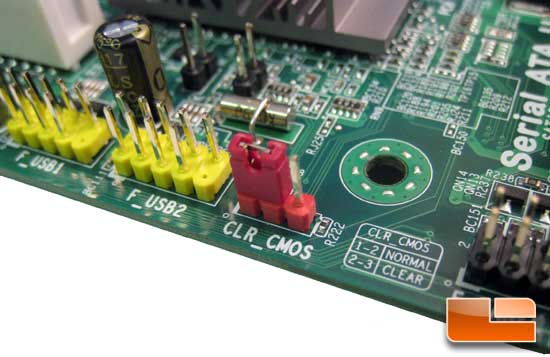
Our Clear CMOS is also located here, right next to a couple of USB headers. As we mentioned, the H55H-M supports up to 12 USB inputs.
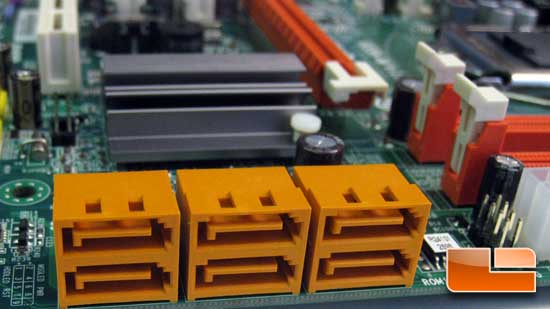
We also have our six SATAII ports on this area of the motherboard which support up to six SATAII 3.0Gb/s devices.
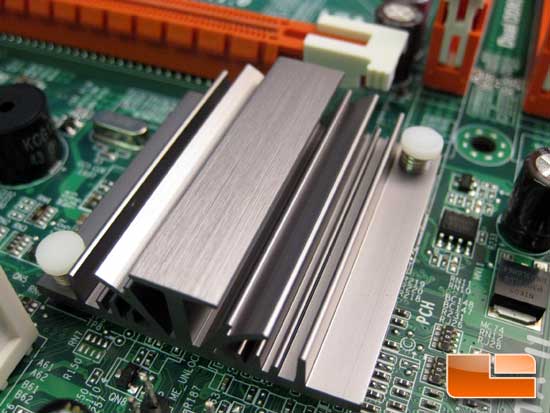
A nice little, yet creatively designed heatsink covers our chipset. I never felt any heat to speak of through all of my testing, even after raising the voltages on the board.
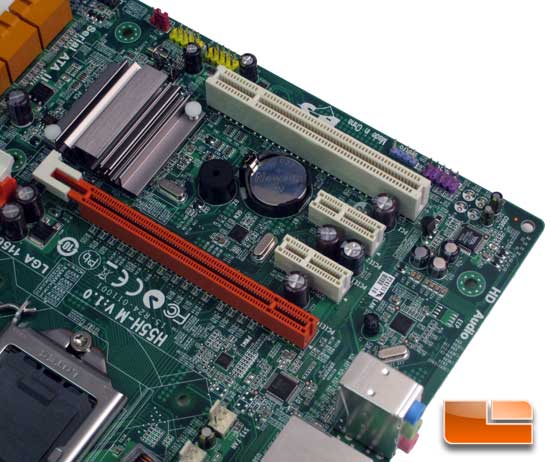
The bottom right of the board is where we find our expansion slots on the board. This ECS board supports one x16 PCI Express slot, two x1 PCI Express slots and one legacy PCI slot.
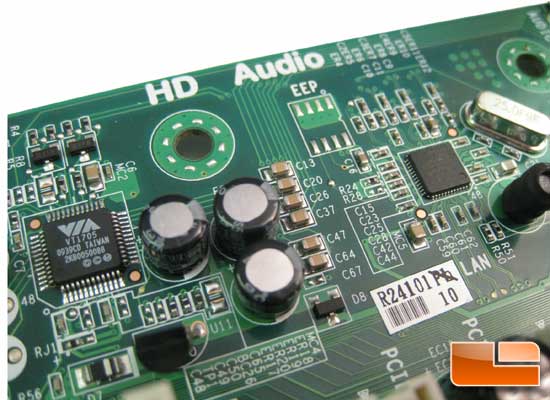
We also have our audio and LAN chips here in this area of the board. Audio is provided by the Via VT1705 6-channel audio codec. The LAN is powered by the Atheros AR8131M Gigabit Fast Ethernet Controller.
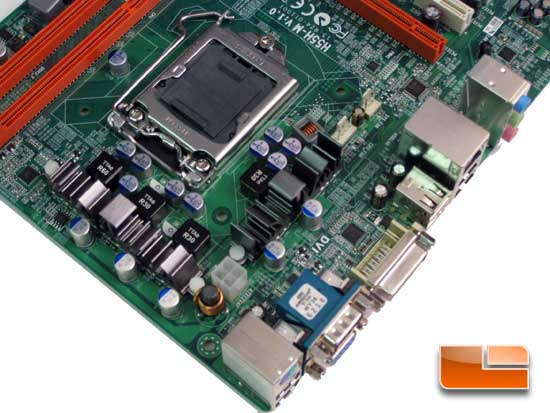
The top left of the board is, of course, where the CPU socket is (really more centered than anything). There is plenty of room for your heatsink. The 4-pin 12v connector is also tucked nicely up towards the top of the board, which is a nice placement.
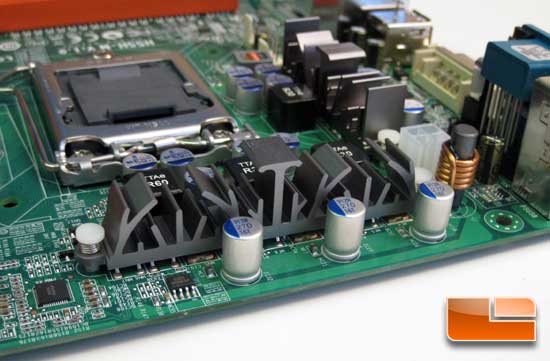
Once again, the heatsinks on this part of the board are very nicely designed and in no way take away from the overall appearance of the board. They also help to keep the 4-phase power design on this board running nice and cool.
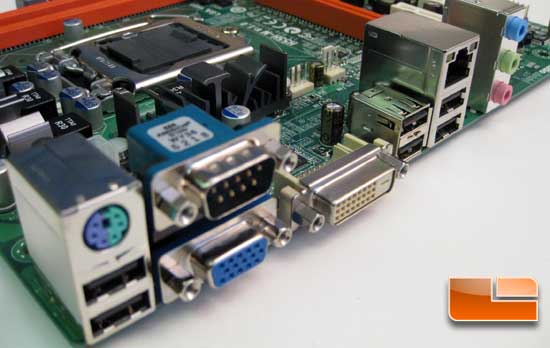
The back I/O ports included on the ECS H55H-M board are very simple, and can be misleading if you do not remember some of the things we have already pointed out on this board. First off, the obvious: you have a PS2 port for mouse or keyboard, you have six USB 2.0 inputs here, your Gigabit LAN port, three audio jacks that, as we mentioned above, support six channel audio, and a serial port. You also have a VGA and DVI out here, but remember: this board does NOT have onboard graphics of any kind. To use these ports, you must use a Clarksdale processor which has the Intel HD video on the CPU itself. One thing lacking is the presence of an HDMI output. How can you design a board like this without one? Sure, you can make do with what you do have here and use a DVI-HDMI adapter for video, but HDMI is so handy that it will be missed on this board.












Comments are closed.